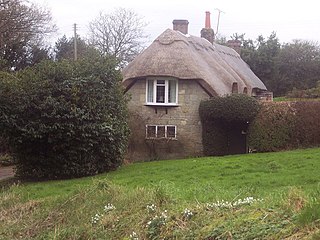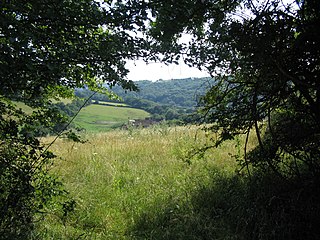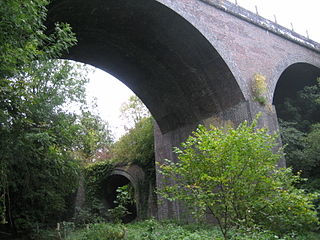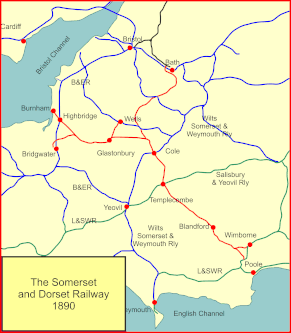
The Somerset Coal Canal was a narrow canal in England, built around 1800. Its route began in basins at Paulton and Timsbury, ran to nearby Camerton, over two aqueducts at Dunkerton, through a tunnel at Combe Hay, then via Midford and Monkton Combe to Limpley Stoke where it joined the Kennet and Avon Canal. This link gave the Somerset coalfield access east toward London. The longest arm was 10.6 miles (17.1 km) long with 23 locks. From Midford an arm also ran via Writhlington to Radstock, with a tunnel at Wellow.

Combe Down Tunnel is on the now-closed Somerset and Dorset Joint Railway main line, between Midford and Bath Green Park railway station, below high ground and the southern suburbs of Bath, England, emerging below the southern slopes of Combe Down village.

Midford railway station was a single-platform station on the Bath extension of the Somerset and Dorset Railway, just to the north of the point where the double-track became a single track. It served the village of Midford. The station was closed with the rest of the line in March 1966 under the Beeching axe, though it had been unstaffed for some years before that.
Bencroft Hill Meadows is a 5.1 hectare biological Site of Special Scientific Interest some 3 miles (5 km) to the east of the town of Chippenham in Wiltshire, England, notified in 1988. The site is a flora-rich example of unimproved pasture on the Oxford Clay Vale of North Wiltshire which attracts butterflies such as the small copper, small heath and common blue.
Brimsdown Hill is a 193.7 hectare biological Site of Special Scientific Interest in Wiltshire, notified in 1951. It is situated within the Cranborne Chase and West Wiltshire Downs Area of Outstanding Natural Beauty.j,
Bradley Woods is an area of woodland in Wiltshire, south of Longleat Woods and north of Gare Hill.
Little Grubbins Meadow is a 3.0 hectare biological Site of Special Scientific Interest in Wiltshire, England, notified in 1975.
Cockey Down is a 15.2 hectare biological Site of Special Scientific Interest in Wiltshire, notified in 1971.

Gutch Common is a 35.1 hectare biological Site of Special Scientific Interest in Wiltshire, notified in 1951.
Cloatley Manor Farm Meadows is a 12.1 hectare biological Site of Special Scientific Interest in Wiltshire, notified in 1997.
Out Woods is a 14.3 hectare biological Site of Special Scientific Interest in Wiltshire, notified in 1975. It is an ancient Ash-Maple woodland noted for containing rare species of ground flora.

Honeybrook Farm is a working farm three miles (4.8 km) south of Castle Combe in Wiltshire, England, between the villages of Biddestone and Slaughterford. The farm has a total area of sixty-five hectares, of which forty-two point four one hectares are designated as a biological Site of Special Scientific Interest.
Hang Wood is a 20.3 hectare biological Site of Special Scientific Interest in Wiltshire, notified in 1986.
Harries Ground, Rodbourne is a 6.87 hectare biological Site of Special Scientific Interest in Wiltshire, England, notified in 2003. It lies to the south of Rodbourne in north Wiltshire, about 3 miles (5 km) south of Malmesbury.
Colerne Park and Monk's Wood is a 53.7 hectare biological Site of Special Scientific Interest in Wiltshire, notified in 1951.

Danks Down and Truckle Hill is a 13.1 hectare biological Site of Special Scientific Interest in Wiltshire, notified in 1990.
Inwood, Warleigh is a 56.9 hectare biological Site of Special Scientific Interest in Wiltshire, notified in 1988.

Midford Halt railway station was open between 1911 and 1915 in Somerset, England. The halt was on the Limpley Stoke to Camerton railway that formed part of the Great Western Railway's development of the former Bristol and North Somerset Railway, and which followed the former Somerset Coal Canal. The line was only open to passenger traffic for seven years in all, from 1910 to 1915, and from 1923 to 1925; Midford Halt opened a year late and then did not reopen for the second period.

The New Somerset and Dorset Railway, formed in early 2009, aims to restore the complete line of the Somerset and Dorset Joint Railway as a modern transport system for the 21st century. The group also has a heritage aspect, to encourage future use by steam specials, etc. Work is currently concentrated on five sites, Midford - Midsomer Norton - Gartell - Shillingstone - Spetisbury. Some of these are operated by independent groups.

Devonshire Tunnel is on the closed Somerset & Dorset Joint Railway main line, between Midford and Bath Green Park railway stations, below high ground and the southern suburbs of Bath, England, emerging below the northern slopes of Combe Down village. It opened in 1874 and was named after the road called Devonshire Buildings which lie immediately above the tunnel.








